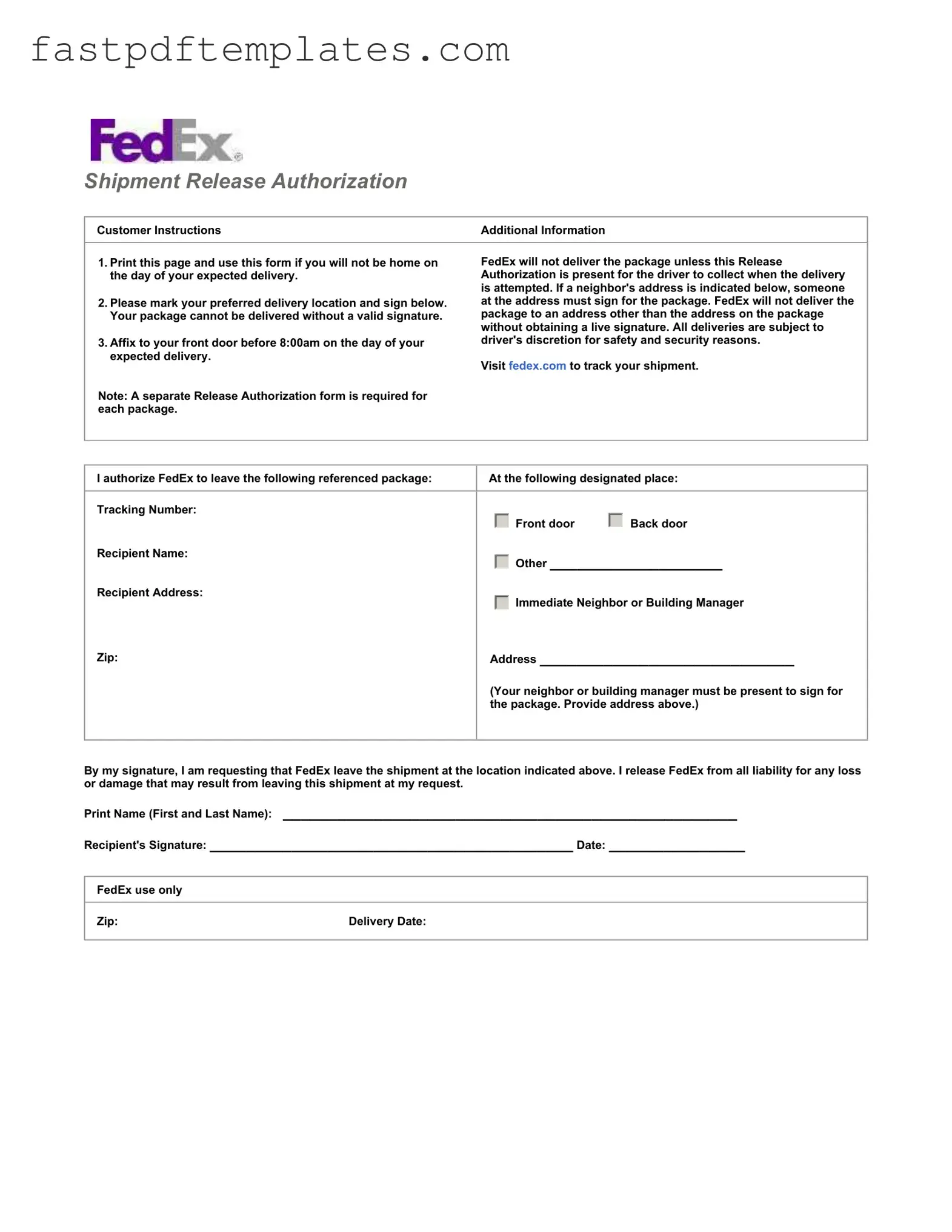The FedEx Release Form shares similarities with the UPS Delivery Authorization Form. Like the FedEx form, the UPS form allows customers to authorize the delivery of their packages in their absence. Customers can specify a preferred delivery location and provide instructions for the delivery driver. Both forms serve to protect the shipping company from liability by ensuring that the customer takes responsibility for the package once it is left at the designated location. In essence, both forms streamline the delivery process while providing peace of mind to customers who may not be home to receive their packages.
Another document akin to the FedEx Release Form is the USPS Package Intercept Request. This form enables customers to redirect their packages while they are in transit. Similar to the FedEx form, it requires the customer’s signature and specific instructions regarding the new delivery location. Both documents aim to provide flexibility and control over package deliveries, ensuring that customers can manage their shipments according to their needs. However, while the FedEx Release Form is primarily for deliveries when a customer is absent, the USPS form focuses on changing the delivery route of an already dispatched package.
The Amazon Delivery Instructions feature also resembles the FedEx Release Form. Customers can provide specific instructions on where they would like their packages to be left if they are not home at the time of delivery. Both documents emphasize the importance of a signature, either directly or through the customer's instructions. This ensures that the delivery service has a clear understanding of the customer's preferences, thereby enhancing the delivery experience. The Amazon option, however, is integrated into the online shopping process, making it more seamless for customers who frequently order online.
Lastly, the DHL Release Authorization Form is another document similar to the FedEx Release Form. This form allows customers to authorize DHL to leave packages at a specified location if they are unavailable to receive them. Much like the FedEx form, it requires the customer’s signature and provides options for preferred delivery spots. Both forms serve the same purpose: to ensure packages are delivered safely and according to the customer’s wishes, while also protecting the delivery service from potential liability. The key difference lies in the specific policies and procedures of each shipping company regarding package releases.

